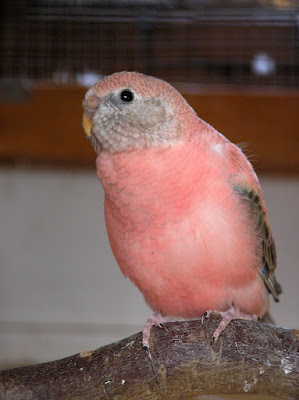The days are getting shorter, weather's not great and it'll soon be the start of frosty nights....yet all my birds are breeding. I suppose it is coming up to their natural breeding season in Australia.
Rudolph and Goldie have a full clutch of 5 chicks.
Rocky and Rosie have 3 fledged chicks and Rosie's started laying again.
And it looks like Pinky may have finally sowed his oats - at least partially. Perky is sitting on 5 eggs and two look fertile!
Normally I would never consider letting my birds breed this late, but then I thought why not if they are willing, provided I stick to the rule of only allowing them to raise two clutches of chicks per year. Provided they get the eggs laid before it gets to cold they should be OK, also I have lights in the aviary that come on in the morning to extend the day. I find that there is no point having them on in the evenings as the birds roost at dusk anyway.














